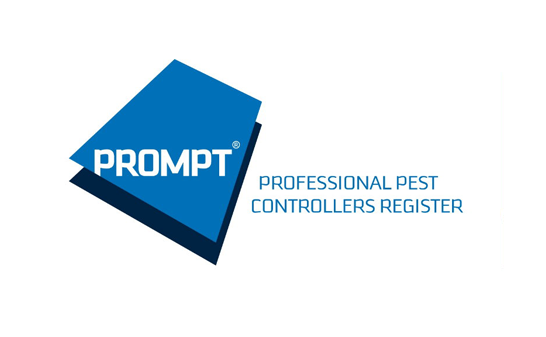For over 25 years, our experts have gained experience in putting an end to general Silverfish and Centipede pest control problems in Chingford and Tottenham. With our high quality service, we guarantee to eradicate unwanted pests. For leading Silverfish and Centipede pest control services in Chingford and Tottenham, call Pest Free 24/7 now, on 07960 612 736.
General Pest Control Services
in Epping, Enfield and Loughton.
General Pest Control Removal Services
Silverfish Extermination
Silverfish are pests that thrive on humid conditions. Damp areas, including bathrooms and kitchens, as well as any dark and isolated spaces within your home, are at risk. Characteristics of the silverfish, Lepisma saccharina:
- Lay eggs in any season and take 19 to 43 days to hatch
- The life cycle from egg to adult is three to four months molting at least three to four times
- Prefer moist areas (75 to 97% humidity) and moderate temperatures (70° to 80° F)
- Active at night or in dark places and may be found throughout the building
- Adults lay one to three eggs per day and live two to 3.5 years; the biotic potential of one female is 1,500 to 3,500 offspring
- Adults molt up to 50 times
- Leave yellowish stains on fabric
- Outdoors, live in nests of insects, birds (especially pigeons), and mammals, and under the bark of trees

Centipede Removal
If you are looking for experts to remove centipedes from your property, get in touch with the specialists at Pest Free 24/7. We offer centipede removal services for both domestic and commercial customers in Hornchurch and South Ockendon. If you have any queries, feel free to talk to us today.

What Do Silverfish Look Like?
From a distance, silverfish do indeed resemble tiny, tear-shaped, silver or gray fish. Up close, however, they display some other telltale characteristics such as a three-bristled tail and long, backward-curving antennae. Adult silverfish typically grow 12 to 19 millimeters in length.
What Environmental Conditions Do Silverfish Require?
Silverfish seek warm, humid environments. They thrive in temperatures of 70 to 85 degrees Fahrenheit, a fact that makes many human residences an attractive harbor for their breeding activities. Silverfish egg development also requires humidity of at least 50 to 75 percent, causing the insects to frequent bathrooms, basements, and attics.
How Do Silverfish Infiltrate Homes?
Silverfish often enter homes through the roof. Shake roofs that employ wooden shingles offer an easy point of entry, since the silverfish can eat their way through the cellulose. Once the silverfish penetrate the organic materials of the roof, they can get into the insulation and make their way to the attic or down the walls.
What Do Silverfish Eat?
Silverfish have an appetite for proteins, including the proteins available in dried meats or even the bodies of dead silverfish. When they can’t get proteins, they will feast on starches, sugars, and other carbohydrates. A silverfish infestation can consume everything from paper and fabrics to glue and packaged foods.
Why Should You Eliminate Your Silverfish Problem?
In addition to the natural repulsion you and your house guests may feel for silverfish, these odd-looking insects’ eating habits can lead to considerable destruction around your home. The results may include lost valuable documents, damaged upholstery, ruined books, half-eaten groceries, and holes in your clothes.
Silverfish don’t seem to transfer diseases on the alarming scale of certain other pests. However, their molting activities can set off allergic reactions in susceptible individuals. They may also attract a variety of other pests who might regard them as a food source, multiplying your household pest headaches.
How Do Pest Control Experts Deal With Silverfish?
The approach your pest control expert takes to your silverfish problem may depend on the severity of the infestation. If your home appears littered with molted skin particles, fecal pellets, yellowish fabric stains, and signs of paper destruction, your pest control team may recommend extermination using chemical pesticides.
Two common chemical pesticides used to exterminate silverfish include pyrethrin (the same active ingredient in some pet pest-control collars) and propoxur. Bear in mind that these chemicals kill adult silverfish but do not affect their eggs. You may therefore need to schedule repeated treatments to kill off all the egg-producing adults.
Ask your pest control expert about other methods that you can safely employ between treatments to reduce your silverfish population. Options may include bat traps, sticky traps, boric acid, and diatomaceous earth (a non-toxic crushed rock product that dries out the bodies of insects that come into contact with it.
How Can You Keep Silverfish Away?
You can make your home less hospitable to silverfish. Keep packaged foods in airtight plastic or metal containers. Regularly vacuum any cracks, crevices, and other known silverfish hiding places. Fix any plumbing problems that might contribute to humidity problems, employing a dehumidifier to dry the air further if necessary.
We can evaluate your silverfish issues, perform any necessary extermination procedures, and help you keep your home silverfish-free going forward. Contact us to schedule an inspection.
What type of animal is a centipede?
Centipedes are terrestrial arthropods that have at least 15 pairs of legs. There are many different types of centipede, including the black centipede, water centipede, giant centipede, Hawaiian centipede, house centipede, and the giant desert centipede.
What class of animal does a centipede belong to?
Centipedes are arthropods belonging to the class Chilopoda.
How many centipedes are there in the world?
8,000 species of centipedes exist worldwide.
Where does a centipede live?
Centipedes have a wide geographical range, from arctic to terrestrial habitats, from tropical rainforests to deserts.
What is a centipede's habitat?
Centipedes can be found easily all over the world, be it in South America, North America, Europe or Africa. Some of the most peculiar and largest varieties of centipedes are located in South America. One of the best centipede habitat facts is that centipedes usually prefer moist, dark, and cool habitats since they are nocturnal in nature.
Who do centipedes live with?
Unlike bees or ants, centipedes usually prefer living alone. From house centipedes to the ones living in the wild, they tend to dwell alone. They are sometimes called ‘solitary hunters’ since they prefer to live and hunt alone.
How long does a centipede live?
The lifespan of arthropods varies for different species. While on average, centipedes live for one year, a few have lived for up to six years.
How do they reproduce?
Almost all centipedes species reproduce through the sexual mode of reproduction, however, there are a few species that use the asexual mode, known as parthenogenesis. Sexual reproduction in centipedes is initiated by the male. They initiate the process by churning out tiny webs all around, wherever the retrieval of sperm packages is possible by female centipedes. The female then retrieves the package uses it to lay centipede eggs consecutively under tree barks, stones or dirt. The mother takes care of the eggs and raises the infants before the whole cycle repeats. The prime time for centipede breeding is the summer.
What is their conservation status?
Although most centipedes are listed as Not Extinct, there is one species of centipede that is listed as Vulnerable by the IUCN. This is the serpent island centipede that is found in Africa.
DON'T LET PESTS RUIN YOUR DAY. CALL US TODAY TO FIND OUT HOW WE CAN HELP.
Testimonials
Make An Enquiry
If you have any London pest control questions and want to know more, please fill in the form below and a member of our team will be in touch.





